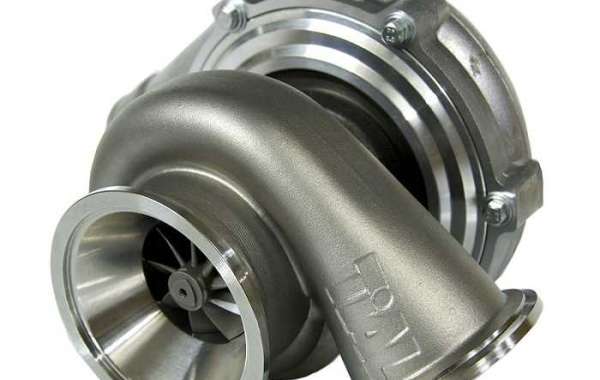These must-have footwear types range from ankle boots to thigh-high boots and are both comfy and attractive. Many ladies, however, are upset year after year because they must forgo the popular knee-high boots. Why? Thick calves generate a "boot bulge" and just will not allow the zipper to climb all the way up. If this seems like an issue one has encountered while selecting your own winter wardrobe, it doesn't have to be that way anymore.
So, those who have large calves can think of having plastic surgery to get rid of it. One can utilize one of two methods to minimize the size of your calves. The first is calf reduction, and the second is calf liposuction. Let's take a closer look at each and the advantages they provide. To make this an informative post the information is gathered from the expert plastic surgeon, Dr. Parag Telang. He is a renowned plastic surgeon known for offering the best liposuction in Dubai. Let's start by understanding what calf liposuction is and calf reduction surgery is.
What is Calf Liposuction?
Calf liposuction includes the removal of fat rather than the reduction of muscle. It necessitates a surgeon making minor incisions in the area while the patient is sedated. He or she next inserts a tiny cannula and suction out the fat. This helps the leg and ankle area appear smaller and more appealing.
Calf liposuction is incredibly successful when performed by a highly qualified and experienced surgeon. For a full look, the lower leg can be sculpted. In addition, the patient might get a toned and firm appearance. However, an inexperienced surgeon can yield lumpy and unappealing outcomes.
What is Calf Reduction Surgery?
During a calf reduction procedure, the gastrocnemius muscle in the leg is reduced. This helps the calf appear more appealing and less conspicuous. The method works primarily because when muscles are not exercised, they atrophy or waste away. The nerves in the calf are targeted during a calf reduction. The surgeon cuts them, allowing the muscles to deteriorate over time. The calves will eventually appear more defined and thinner.
Calf reductions are minimally invasive procedures. They only need a little incision behind the knee. This gives access to the nerves, which are then severed and ligated by the surgeon. The remaining nerves are then clipped by the surgeon. This guarantees that the calf is in the best possible shape. Because the muscle is not stimulated, it will gradually atrophy. This means that the muscle will be decreased more consistently, with no anomalies in its contour.
Why Do I Need A Calf Reduction?
Calf reductions are popular among patients since they are minimally invasive. The cuts necessary are quite small, and the scarring is negligible. The method is also indefinite. While this can be beneficial, the fact that it is irreversible can be problematic. Hypertrophy can arise as a compensatory response in some cases. This indicates that the muscles in the surrounding area grow stronger. This can lead to unhappiness with the outcomes.
Why Should I Have Calf Liposuction?
If one chooses liposuction, one will have a thinner and more appealing lower leg. This technique, too, is less invasive and leaves little scarring. Because the surgery is performed under local anesthesia, the recovery period is brief. Furthermore, because the fat is permanently gone, there is little chance of it returning. The calves will stay slender as long as one eats well and exercises regularly. There are no concerns because this is likewise a reliable and safe procedure when performed by a qualified surgeon.
What are the Steps in a Calf Liposuction Procedure?
A calf liposuction procedure involves the following steps:
- Prior to the Procedure
A pre-operative check-up is required prior to liposuction to rule out any medical contraindications. A consultation with the surgeon is also organized in order to acquire additional information regarding the surgery. The patient can then discuss his or her expectations with the plastic surgeon and ask any questions.
- Liposuction Surgery
Calf liposuction surgery is done in an operating room under general anesthesia. The technique involves inserting micro-cannulas beneath the skin through a small incision and sucking out the fat cells (deep and superficial) on the calves and ankles. The inner and outer sides of the calf will be treated.
- Following-up Care
Following calf reduction surgery, a compression garment must be worn for many weeks. Edema in the ankle and calf region may develop and last for around 3 months following the procedure. Painkillers can be provided to relieve pain if it is perceived.
What are the Steps of Calf Reduction?
The calf reduction procedure involves the following procedure:
- Physical examination pinpoints the location of the over-prominent muscle.
- A micro-incision is done on the natural crease behind the knee, making it easy to conceal.
- Overt muscle or nerve blockage is selectively decreased while muscle function is safely preserved.
- The calf is slim and snug.
Contraindications and Not Recommended For
According to the American Society of Plastic Surgery, not everyone is a good candidate for liposuction of the legs, including persons who have a lot of loose skin, such as patients who have lost a lot of weight. Skin removal as well as fat removal via liposuction may be required in certain circumstances to achieve thinner calves.
Furthermore, for overweight patients, calf reduction surgery may bring additional complications. Calf reduction surgery to minimize muscle hypertrophy may worsen knee joint deterioration in obese patients because the knees carry more weight after surgery.
Are There Any Other Options?
If one doesn't like the notion of calf lipo or calf reduction, one has other options. Here are some alternatives one could think about. They are, however, not particularly effective.
- Botox. It works by numbing the nerves in the muscles. This limits its mobility. The muscle will diminish with time, making your calves appear smaller and smoother. Although this is a non-invasive option, it is only temporary.
- Radiofrequency Ablation. This procedure is also non-invasive. It identifies nerves within the muscle that must be cut. The nerves are then burned by radiofrequency radiation. The muscle is still intact. Scarring is minor following this surgery. However, one will need to attend more sessions to observe the effects.
- Partial Muscle Resection. In this treatment, incisions are made behind the knee and some of the calf muscle is removed. The size of the incision varies depending on the patient’s condition. The individual doing this surgery will eliminate the muscle in such a way that the calf seems well-sculpted. This is a more invasive and irreversible surgery.
Conclusion
Calf liposuction is frequently the greatest alternative for thinner, more beautiful calves. It is both safe and effective in permanently removing fat from the lower leg. The outcome is really spectacular when accomplished by a competent and talented surgeon. One should seek assistance from a skilled plastic surgeon who can suggest what technique will suit one the best.
One can consult the best cosmetic surgeon in Dubai, Dr. Parag Telang. The expert cosmetic surgeon has an overall expertise of 15 years in performing varied plastic and cosmetic surgeries such as gynecomastia surgery, breast reduction, breast augmentation, abdominoplasty, and many more.
The skilled cosmetic surgeon, Dr. Parag Telang has extensive experience conducting calf liposuction and reduction treatment. To have nicely toned legs, book a consultation with the expert now!










